
On a regular day, tomatoes have shiny green leaves that indicate a healthy and happy plant. But, as many tomato gardeners know, that is not always the case.
Tomato leaves frequently change color, from yellow to brown and even purple. These are usually the first signs of a concerning health issue that need fixing immediately in order to preserve your harvest.
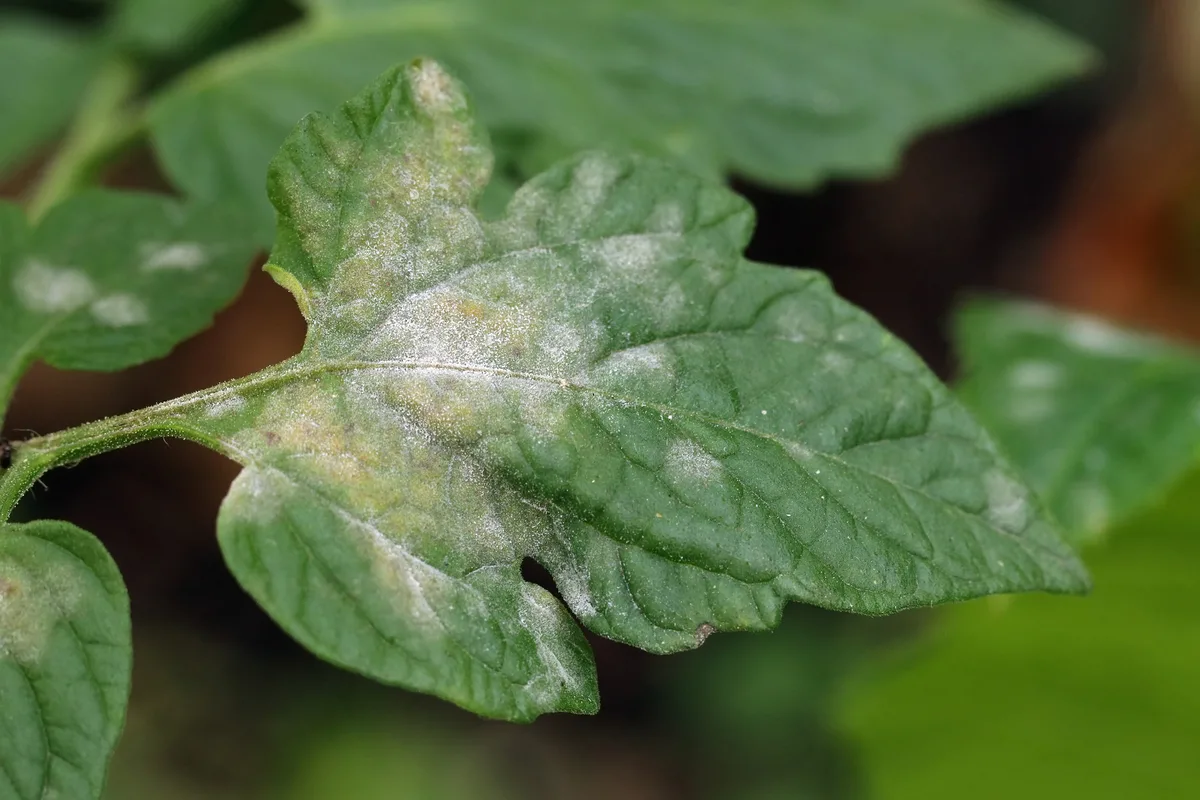
When it comes to tomato leaves developing white spots, there are three potential causes. Let’s take a look.
1. Powdery Mildew
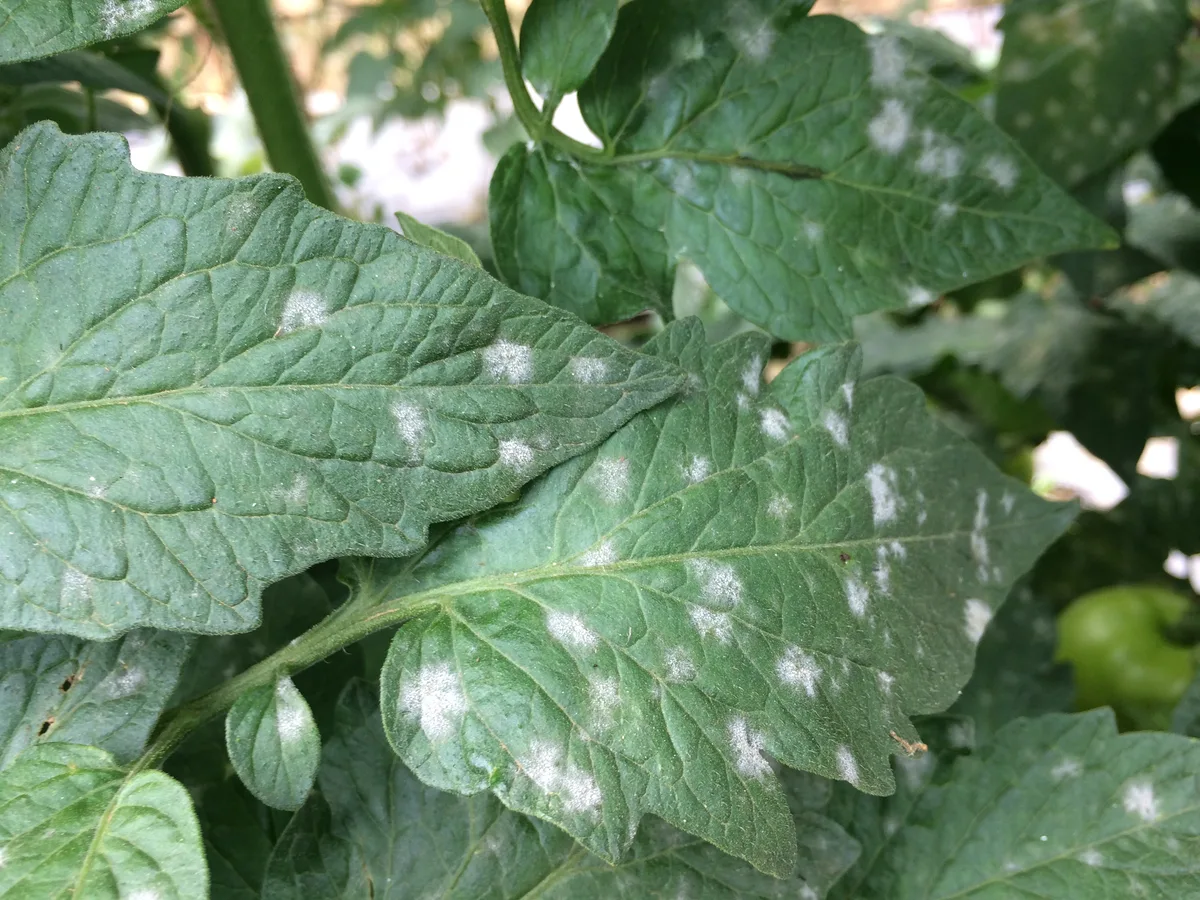
Caused by several types of fungi, powdery mildew is a common disease in tomato plants. It is also not easy to avoid as it’s often carried by air currents and insects such as aphids.
Powdery mildew is most prevalent when the temperatures are hot and dry or hot and humid for an extended period. The fungus can also overwinter in plant debris and compost, coming out when conditions are right.
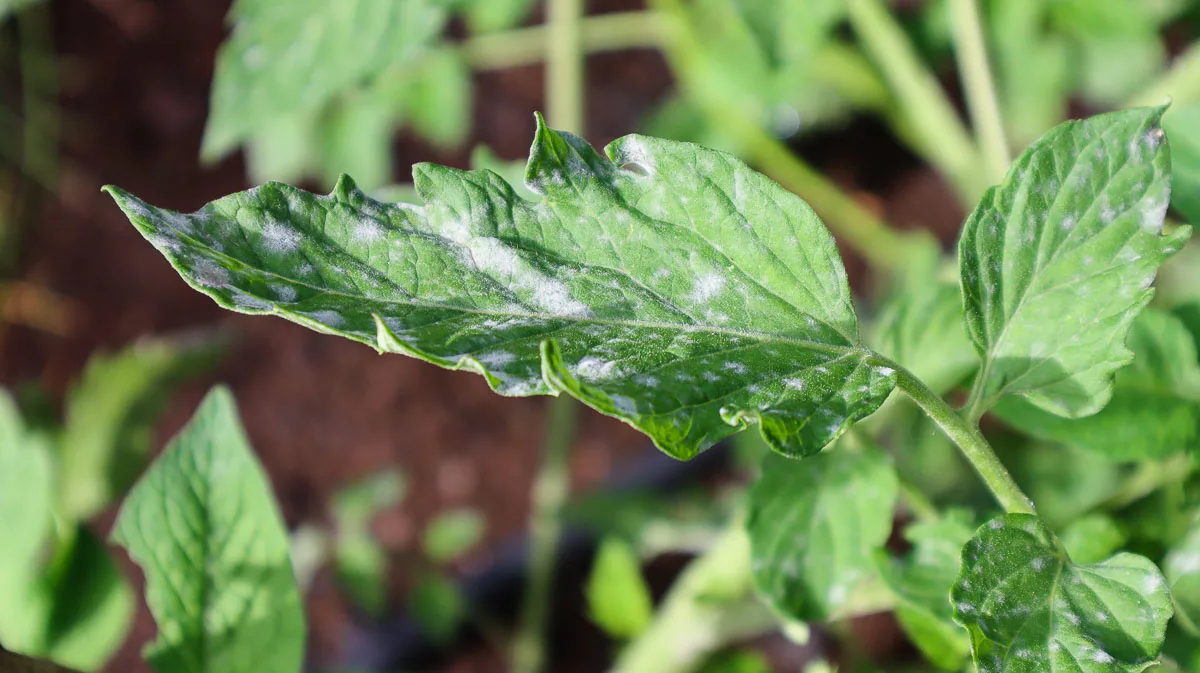
It forms a powdery white or grey dust in splotches on the surface of the leaves and stems. This usually starts on the underside of the leaves, often difficult to catch when it starts. The younger leaves of the plants are more likely to develop the fungus, especially when the plants have just been fertilized and new rapid growth of leaves occurs. It can even spread to flower buds and fruit.
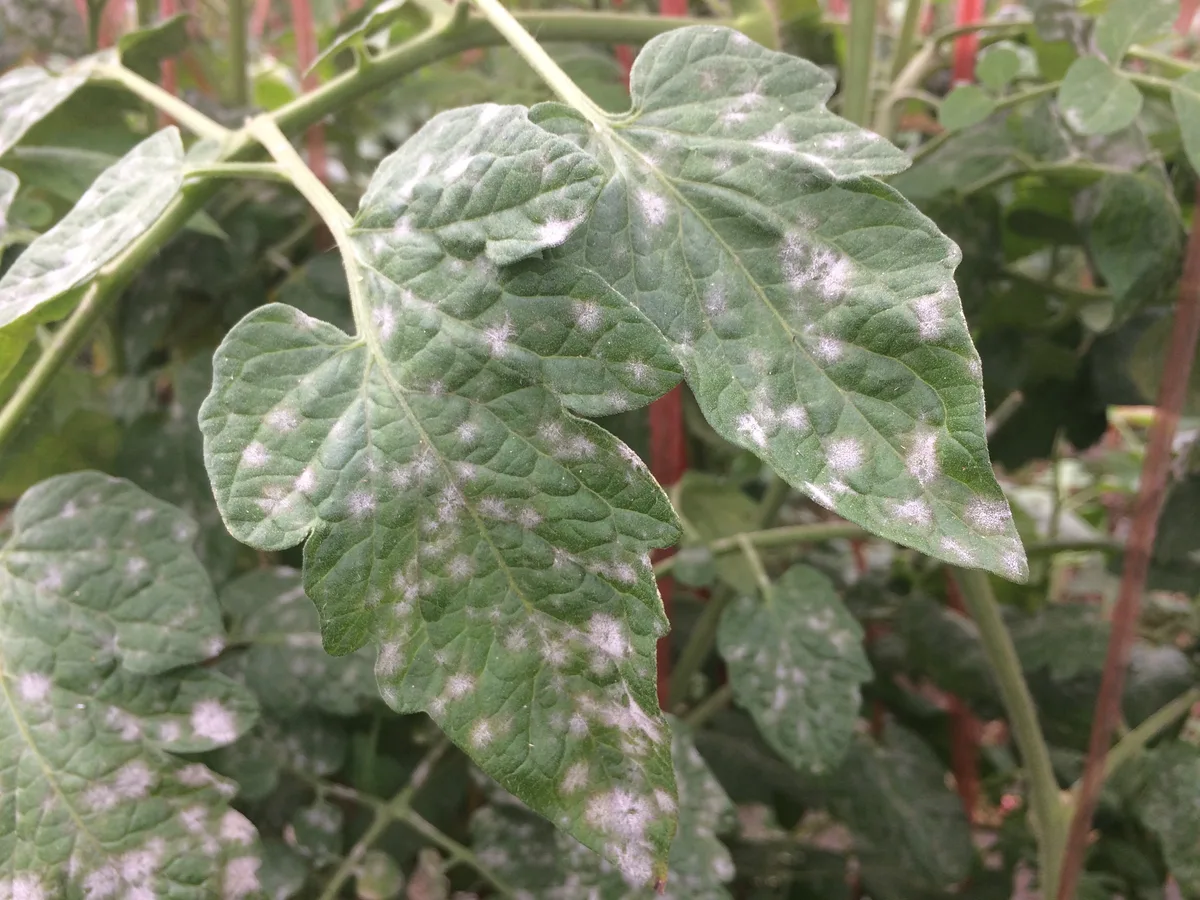
While this fungus is unlikely to kill the plants, it can reduce the yields on the crop and even affect the taste of the tomatoes. They feed on a plant’s cells, causing leaves and stems to yellow but remain on the plant – covered in white mildew.
Once you spot powdery mildew, quick action is needed to get it under control. The faster you treat it, the better chance you have of getting rid of it completely.
Try treating with neem oil or commercial fungicide safe for use on edible plants. Bio-fungicides are useful tools to get rid of the disease without infecting the plant with any dangerous chemicals.
Cut away any diseased parts of the plant and destroy them. Follow up weekly with your treatment until the problem is resolved. Once you have the fungus under control, the tomatoes will develop normally.
How To Prevent Powdery Mildew On Tomatoes
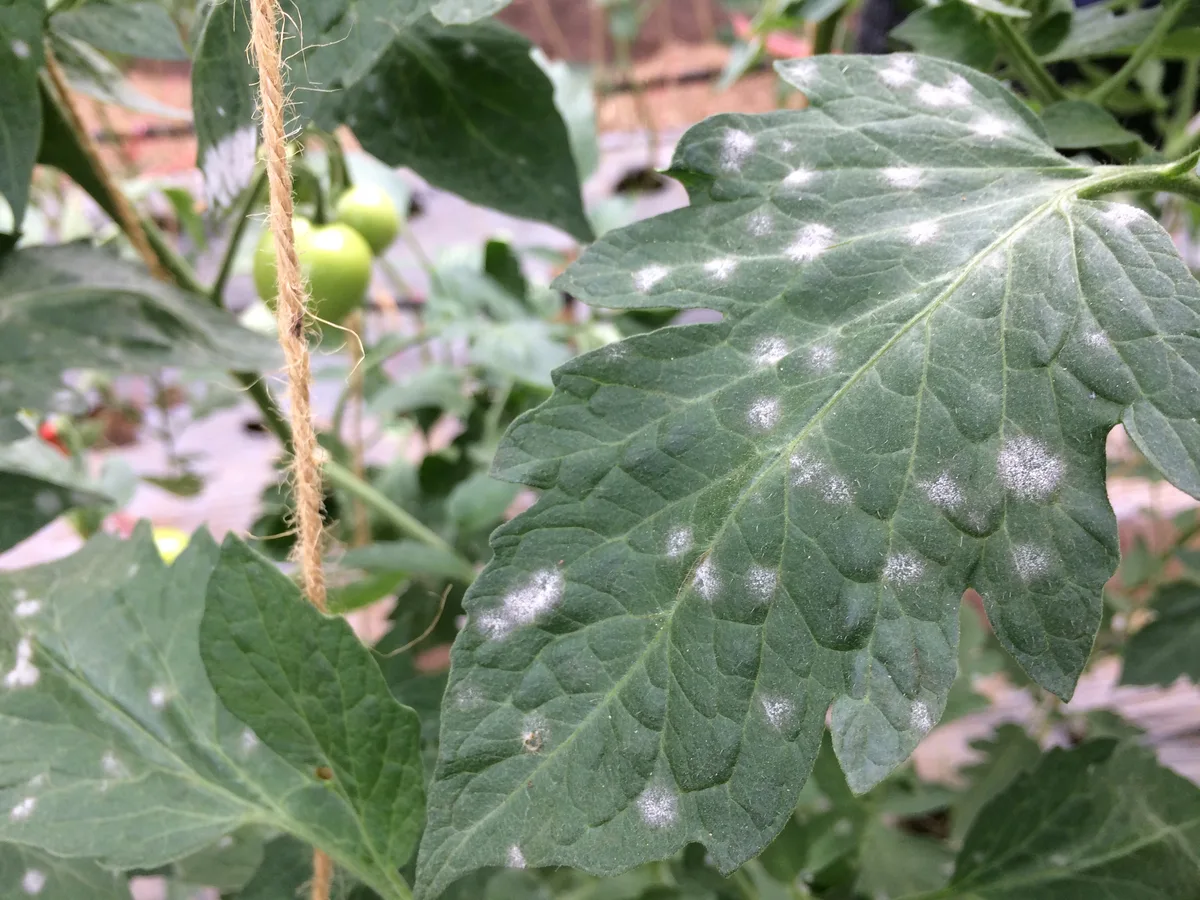
- Space tomato plants correctly for good air flow. Aim for 18 – 24 inches apart for the best results.
- Make sure the plants get enough sunlight. They should receive at least 6-8 hours of full sunlight a day.
- Water the soil and avoid getting the leaves wet. Wet leaves can attract fungus and spread the disease. A drip irrigation system is ideal to grow tomatoes. It may be pricey, but if you want to grow tomatoes long-term its well worth the effort and expense.
- Don’t put any powdery mildew infected plant materials in your compost. Rather burn them or discard them elsewhere.
- Preventative measures are worthwhile, particularly for tomatoes as powdery mildew is common. Use a sulphur dust or spray, or a bio-fungicide every week in hot conditions.
- Fertilize your tomatoes regularly to make sure they remain healthy, stress-free and disease-free. Avoid overfertilizing which could increase the risk of the fungus infecting the plants with the rapid growth of new leaves.
- Keep the plants pruned to increase air circulation. Remember to sanitize your pruning tools before and after pruning infected parts of the plants.
- There are varieties of tomatoes that are more resistant to powdery mildew. Varieties like ‘Geronimo’, ‘Imperial 643’, ‘Massada’ and ‘Panzer’ are more resistant than others.
2. Sun Scalding
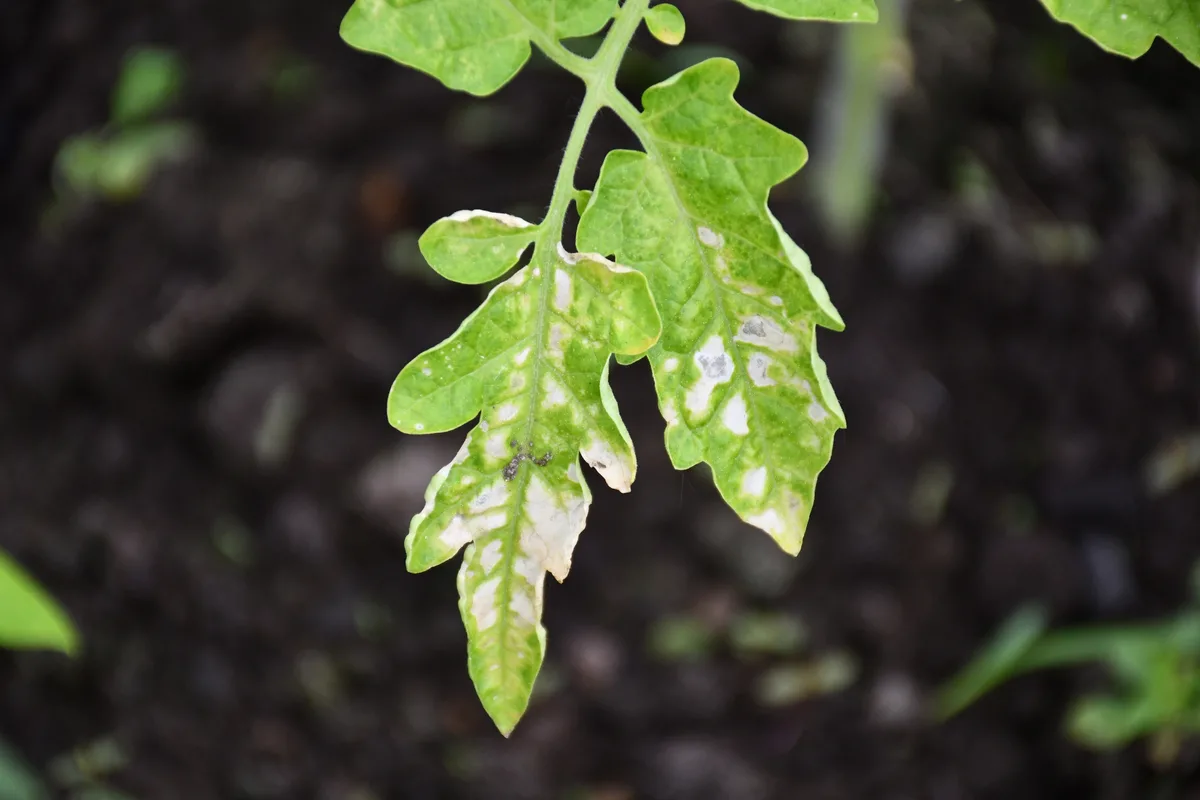
Tomato leaves can develop white spots on their leaves from sun scalding. When the leaves are exposed to intense direct sunlight, they may become damaged and begin to turn white. This can be the result of transplanting tender seedlings into beds outdoors from the sheltered greenhouse where the plants are not used to harsh sunlight or heat.
The sunburnt leaves will dry out and turn brown, falling off the plants. This inhibits the growth of the plant and compromises overall health.
If the fruits have already formed, sun scalding can appear as white blistery areas on the skin.
How To Prevent Sun Scald In Tomatoes
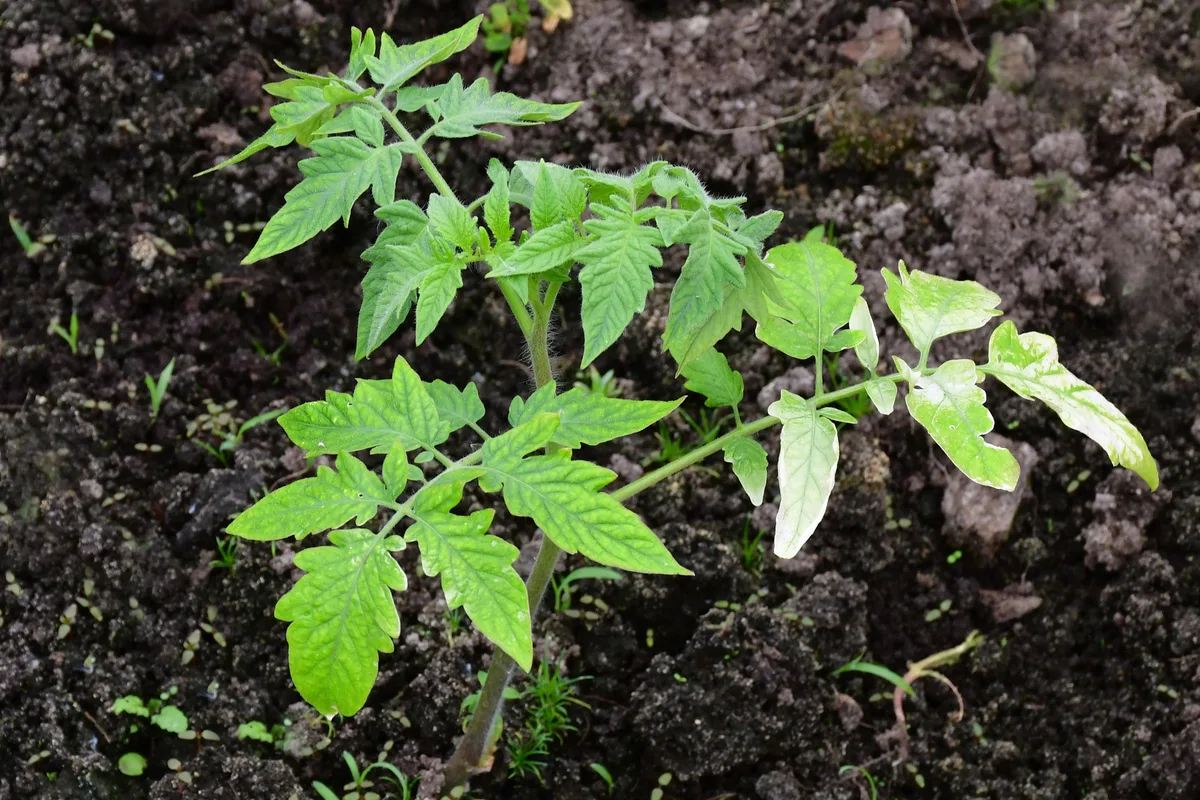
- Harden off your tomatoes before planting into outdoor garden beds 7-10 days before planting out. Start in the shade outdoors and each day, give the seedlings a little more sun. On the last day, leave the seedlings out at night as long as the temperatures are above 50F. If your seedlings are happy the next day, move them to the garden. However, if they look stressed or wilted, try the same process a little longer before planting out in the garden.
- If your plants are already in the garden, cover them with shade cloth to prevent sun scalding. As they grow, reduce the time under shade cloth to harden them off.
3. Late Blight
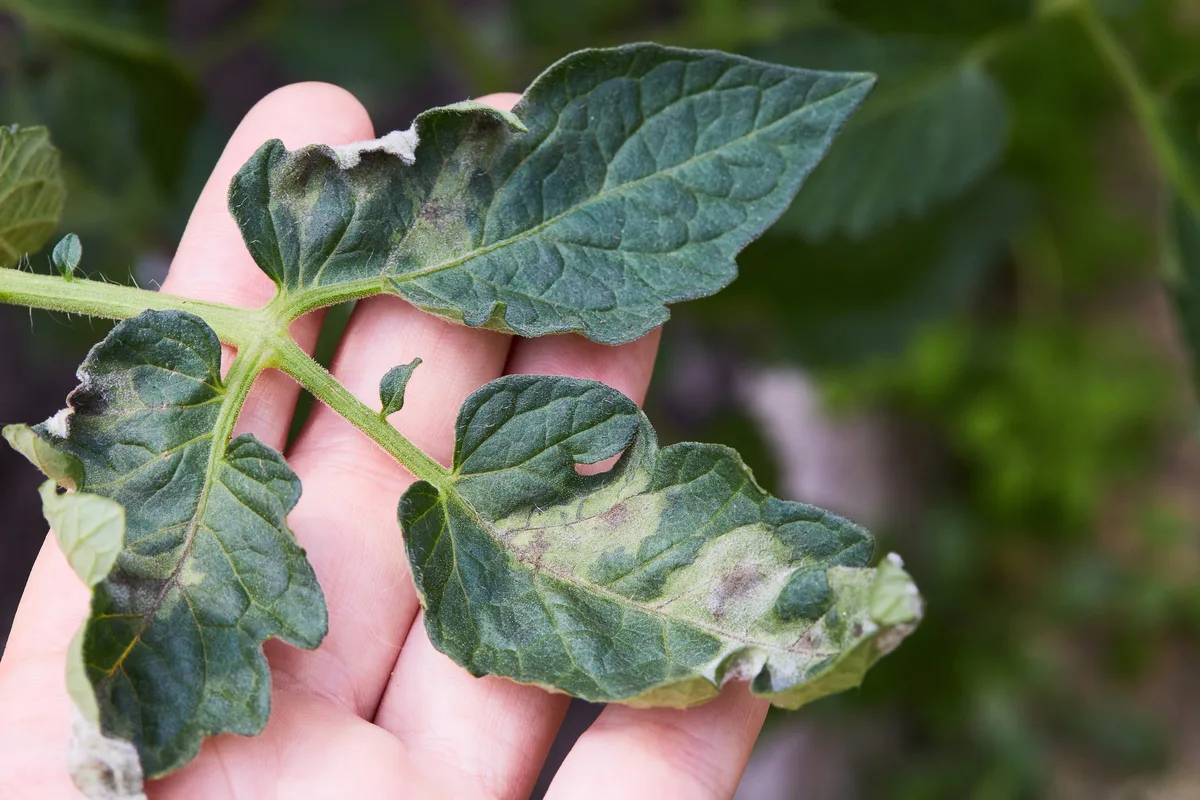
Large brown and white spots on leaves could be caused by a severe tomato fungal disease – late blight. It is caused by the fungus Phytophthora infestans. This fungus is highly contagious and spreads rapidly, killing the plants in a couple of days.
The only course of action for this disease is to remove and destroy the plants. Don’t add them to your compost or it will spread through your garden.
Late blight usually appears in summer or autumn and more so in wet weather. Pale green spots on the tips of leaves turn brown to black and in humid conditions you may see a fuzzy white mold on the underside of the leaves. Brown spots appear on green fruit and a white mold may also be seen.
How To Prevent Late Blight On Tomatoes
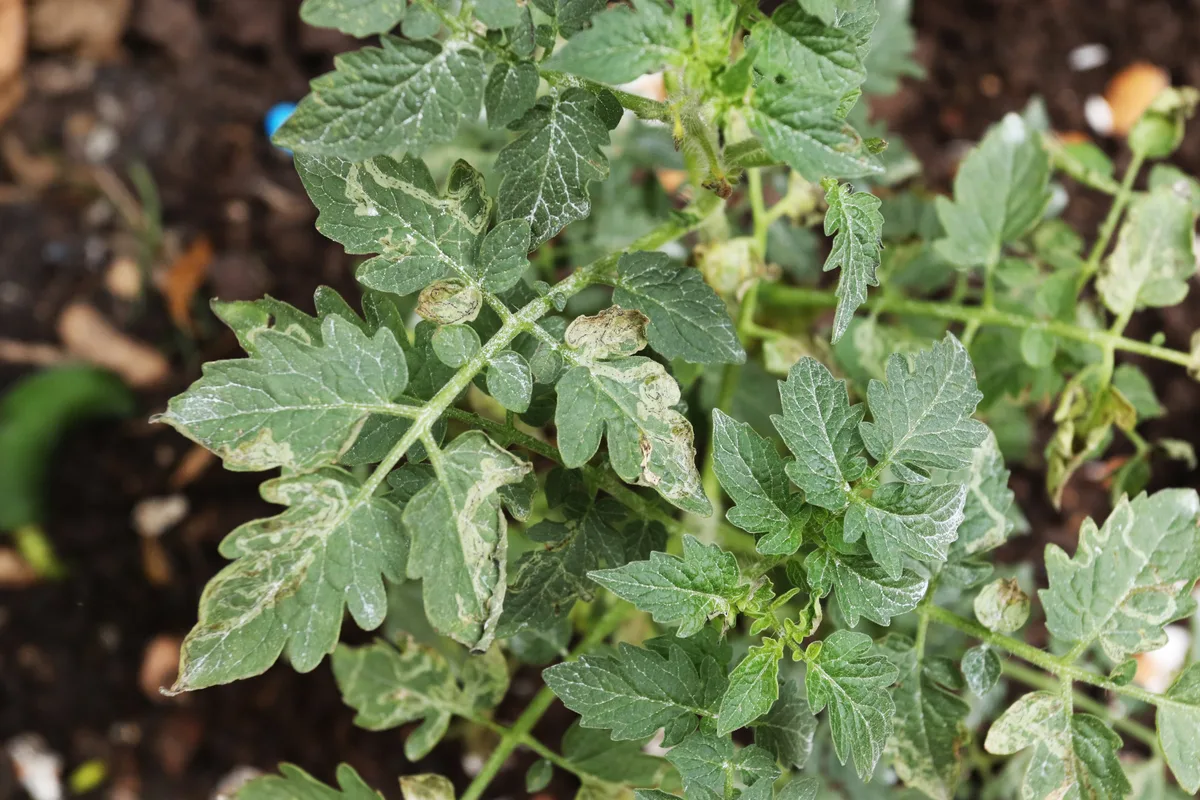
- Regular applications after rain of a bio-fungicide or copper fungicide specifically for fungal disease like blight will help prevent this disease. The applications should be done at least once a week.
- Avoid planting tomatoes near potatoes. Both these plants come from the same nightshade family and enjoy the same soil type and nutrients. They are also susceptible to the same diseases. Planted next to each other, they will compete for nutrients, making both unhealthy and more susceptible to late blight.
- Because Late Blight is such a destructive disease (phytophthora in Latin means literally means ‘plant destroyer’), there is a website USA Blight that tracks outbreaks of late blight across the country. Check the website for any movement in your area and use a weekly preventative spray if any is detected in your area.
